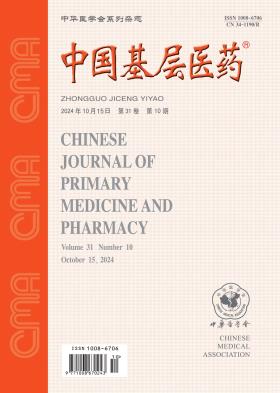血浆BNP联合Tei指数评价先天性心脏病患儿介入治疗前左心室功能的临床价值
引用次数: 0
摘要
目的探讨血浆BNP与Tei指数联合检测在先心病介入治疗前评价患儿左心室功能的临床价值。方法选取2017年4月至2019年4月在中山市大冲医院和中山市博爱医院行介入治疗的先天性心脏病患儿60例作为观察对象,根据NYHA心功能分级将患儿分为心功能分级Ⅰ组和心功能分级Ⅱ组,每组各30例。同时选取30例正常儿童作为健康对照组。比较各组患者血浆BNP浓度、左室射血分数(LVEF)及左室Tei指数的差异。探讨血浆BNP浓度与心功能的相关性,分析血浆BNP浓度与Tei指数的相关性。结果心功能分级Ⅱ组血清BNP浓度[(6.8±1.2)ng/L]、左心室Tei指数(0.63±0.08)均显著高于心功能分级Ⅰ组[(5.4±1.3)ng/L,(0.48±0.11)],差异均有统计学意义(t=1.92, 3.01,均P<0.05)。两组患者这两项指标均高于健康对照组[(3.7±1.5)ng/L,(0.33±0.09)],差异均有统计学意义(t=2.14、2.28、4.19、6.14,均P<0.05)。心功能分级Ⅱ组LVEF显著低于心功能分级Ⅰ组(t=5.00, P<0.05),两组LVEF均显著低于健康对照组(t=10.32, 4.51,均P<0.05)。随着心功能不全严重程度的加重,BNP、Tei指数逐渐升高(F=3.054、3.491,均P<0.05), LVEF值逐渐降低(F=12.50, P<0.05)。同时,线性相关分析显示血浆BNP浓度与左室Tei指数呈正相关(r=0.69, P<0.01)。结论干预前血浆BNP联合Tei指数能快速、准确地评价先天性心脏病患儿左心室功能。作为临床检测的敏感指标,具有临床应用价值。关键词:心脏缺陷;先天性;血管成形术,球囊,冠状动脉;术前时期;利钠肽,脑;左为心室功能;孩子本文章由计算机程序翻译,如有差异,请以英文原文为准。
Clinical value of plasma BNP combined with Tei index in evaluating left ventricular function in children with congenital heart disease before interventional therapy
Objective
To explore the clinical value of combined detection of plasma BNP and Tei index in evaluating left ventricular function in children with congenital heart disease before interventional therapy.
Methods
From April 2017 to April 2019, a total of 60 children with congenital heart disease who were going to receive interventional therapy in Dachong Hospital of Zhongshan and Boai Hospital of Zhongshan were selected as observation subjects, and the patients were divided into cardiac function class Ⅰ group and cardiac function class Ⅱ group according to NYHA cardiac function classification, with 30 cases in each group.At the same time, 30 normal children were selected as healthy control group.The differences of plasma BNP concentration, left ventricular ejection fraction(LVEF) and left ventricular Tei index in different group were compared.The correlation between the plasma concentration and the cardiac function was investigated, and the correlation between the plasma BNP concentration and the Tei index was analyzed.
Results
The concentration of serum BNP[(6.8±1.2)ng/L] and the Tei index of left ventricle (0.63±0.08) in the cardiac function class Ⅱ group were significantly higher than those in the cardiac function class Ⅰ group[(5.4±1.3)ng/L, (0.48±0.11)], and the differences were statistically significant (t=1.92, 3.01, all P<0.05). These two indicators of the two groups were higher than those of the healthy control group[(3.7±1.5)ng/L, (0.33±0.09)], the differences were statistically significant(t=2.14, 2.28, 4.19, 6.14, all P<0.05). In addition, the LVEF of the cardiac function class Ⅱ group was significantly lower than that of the cardiac function class Ⅰ group(t=5.00, P<0.05), and the LVEF of the two groups were significantly lower those that of the healthy control group(t=10.32, 4.51, all P<0.05). With the increase of severity of cardiac insufficiency, the BNP and Tei index gradually increased(F=3.054, 3.491, all P<0.05), and the LVEF value decreased gradually (F=12.50, P<0.05). At the same time, the linear correlation analysis showed that the plasma BNP concentration had a positive correlation with the left ventricular Tei index(r=0.69, P<0.01).
Conclusion
Plasma BNP combined with Tei index can quickly and accurately assess the left ventricular function in children with congenital heart disease before intervention.As a sensitive index for clinical detection, it has clinical application value.
Key words:
Heart defects, congenital; Angioplasty, balloon, coronary; Preoperative period; Natriuretic peptide, brain; Ventricular function, left; Child
求助全文
通过发布文献求助,成功后即可免费获取论文全文。
去求助
来源期刊
CiteScore
0.10
自引率
0.00%
发文量
32251
期刊介绍:
Since its inception, the journal "Chinese Primary Medicine" has adhered to the development strategy of "based in China, serving the grassroots, and facing the world" as its publishing concept, reporting a large amount of the latest medical information at home and abroad, prospering the academic field of primary medicine, and is praised by readers as a medical encyclopedia that updates knowledge. It is a core journal in China's medical and health field, and its influence index (CI) ranks Q2 in China's academic journals in 2022. It was included in the American Chemical Abstracts in 2008, the World Health Organization Western Pacific Regional Medical Index (WPRIM) in 2009, and the Japan Science and Technology Agency Database (JST) and Scopus Database in 2018, and was included in the Wanfang Data-China Digital Journal Group and the China Academic Journal Comprehensive Evaluation Database.

 求助内容:
求助内容: 应助结果提醒方式:
应助结果提醒方式:


